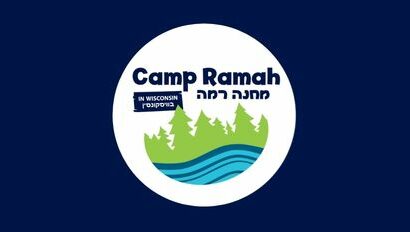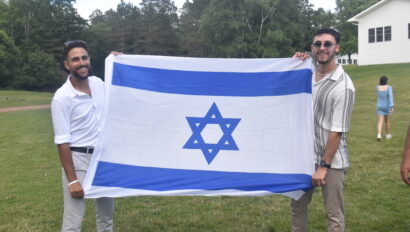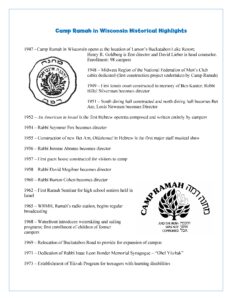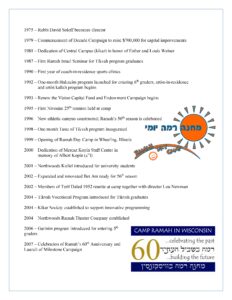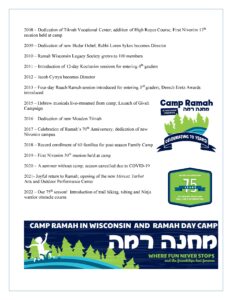Please enjoy a d’var Torah this week from Rosh Halutzim 2017 (entering 6th grade) Ari Vandersluis. A camper for six summers, Ari was on staff for three summers as waterfront staff and cabin counselor. He is currently a junior at The Ohio State University, where he is studying Business Management on the pre-medicine track. Reflections on Parashat Ki Tissa by Ari Vandersluis
In this week’s parashah, Ki Tissa, we read about various large events in the lives of B’nai Yisrael (the People of Israel) leaving Egypt. This parashah includes the sin of the Golden Calf, Moses’s destruction of the tablets containing the Ten Commandments, and subsequently, HaShem’s (God’s) second delivery of the Ten Commandments to Moses. However, directly before these significant events occur we read about an equally important, yet far less discussed event, B’nai Yisrael’s first census. This seemingly insignificant occurrence actually serves as yet another declaration of community. By this point, B’nai Yisrael has already begun their travels through the desert and built a sanctuary for HaShem. Yet, HaShem feels that directly before they receive the Ten Commandments – the pinnacle of the nation’s spiritual journey – He must have an accurate count of the B’nai Yisrael, an almost administrative act to best signify their affirmation of a proud community.
This administrative act of HaShem brings a clear relevance to communities today. One of the first assessments of cities/towns/communities is a census, a very clear indication that the community can be viewed independently. However, with each census comes the question of who can be counted. In the Torah, directly following the commandment to perform a census, Moses is told to include all Israelites above the age of twenty and that each person should contribute a half-shekel, regardless of wealth. By saying this, HaShem clearly defines who it is that carries the responsibility of societal contribution and He shows that each of these people must be treated equally. By deciding who is counted and how they are treated, HaShem sets precedence for community culture.
Much like the Torah’s outline for who is counted in the census, at Camp Ramah in Wisconsin, there is strong intention behind these community foundations. While B’nai Yisrael is counted at the age of twenty, at Camp Ramah your contribution to the community begins as soon as you begin your time as a chanich (camper,) as early as eight years old. From the moment a child or adult steps into the Camp Ramah atmosphere, he or she is valued and challenged intellectually and religiously. Regardless of age, campers find themselves contributing to the community and consistently helping to build a strong Jewish culture. Even in my first summer at Camp Ramah, in Halutzim, I can vividly remember the intellectual debates had within my tzrif (cabin), arguing about whether or not the lake could be used as a Mikveh (a bath in which certain ritual purifications can be performed) – it can! In each of the ten years I have spent at Camp Ramah, it has been clear that my opinion matters and that I am a significant piece of the larger community. At Camp Ramah, every chanich and tzevet (staff) member has a voice. Everyone contributes that half shekel.
Shabbat Shalom.

